This site is part of various affiliate programs. Links may give us a small compensation for any purchases you make, at no additional cost to you. Please read the disclaimer policy for full details.
You know that you have a better chance of standing out among the growing vlogging community if you make high-quality videos for your personal website or powerful vlogs for your social media platforms.
And in today’s vlogging community, with the exponentially increasing number of vloggers and that extra bit of competition, new filming techniques emerge seemingly every day, driven by the new styles that each social media platform values.
You need to tap into these new styles if you want to create powerful vlogs that actually move others, but luckily, In order to support these styles of videography, the camera industry is also evolving. The market offers more than one type of camera that is designed to cover every vlogging situation, which we will carefully go through in this article.
Canon are widely known for making the best vlogging cameras, but which of the many Canon cameras is best for vlogging?
Well, that depends on the kind of vlogging you want to do, whether it’s talking heads, travel vlogs or documentary style filming, but if you want a quick recommendation based on my years of experience, then the best Canon camera for vlogging is the Canon Eos R10. We’ll cover the reasons why, plus some other great choices, in the rest of this article.
The best Canon cameras for vlogging that we will be look at in this article are:
- Canon EOS R10 – The Best Canon Camera for Vlogging
- Canon PowerShot G7X Mark III – The Best Canon Camera for Vlogging on a Budget
- Canon EOS M50 Mark II – Best Vlogging Camera for YouTube
- Canon EOS M6 Mark II – Canon Vlog Camera with Flip Screen
- Canon EOS R
- Canon PowerShot G7 X Mark II
- Canon EOS M200
- Canon EOS REBEL SL3 – The Best DSLR for Vlogging
- Canon EOS RP
- Canon EOS 90D
- Canon EOS M50
What’s the Best Canon Camera for Vlogging in 2023?
The Best Canon Camera for Vlogging
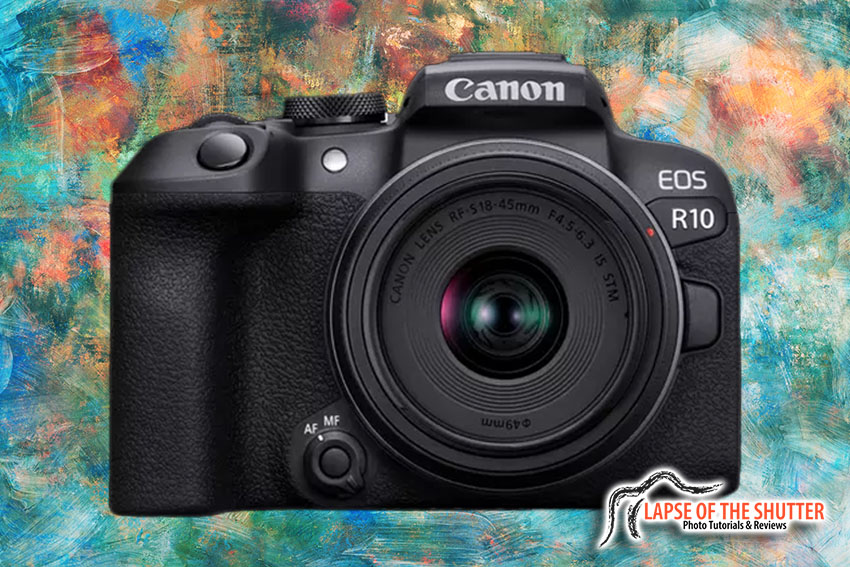
- Canon’s first RF mount crop-sensor camera
- Digic X processor delivering phenomenal ISO support up to ISO 25,600 for video – perfect for night shoots
- Professional-grade 4K/60fps video, with Subject Detection and Tracking autofocus that works well even in near-darkness
- Far smaller and lighter than you would expect from the specifications
- Fully backwards compatible with Canon’s excellent RF, RF-S, EF and EF-S lenses
- Flip-screen meaning you can record yourself with ease
- YouTube live-streaming fully supported
Take a look at the Canon R10 video performance below.
What’s the Best Canon Camera for Vlogging on a Budget?
Budget Canon Vlogging Camera
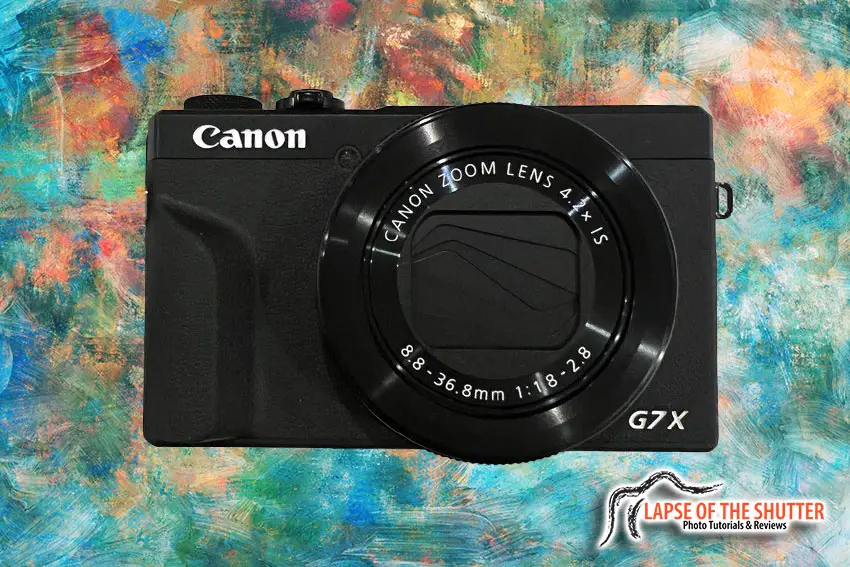
- Tiny camera that is perfect for travel vlogging
- 4K video recording at 30fps, and 1080p 120fps for slow motion filming
- Screen flips 180-degrees for selfie filming
- Touchscreen and external mic input
- Built-in lens is f/1.8 – 2.8 across its zoom range
Take a look at the best budget Canon camera for vlogging, the Canon PowerShot G7 X Mark III, in action below.
Comparison Of Canon Cameras For Vlogging
Camera | Sensor | Video Recording | Ideal Lens | Check Price | |
[Best Canon Camera for Vlogging] | APS-C 1.6x Crop 24.2 Megapixels | 4K / 59.94 (Crop) or 29.97 fps | 18-150mm f/3.5-6.3 IS STM | ||
[Best Budget Vlogging Canon Camera] | 1” 20.1 Megapixels | 4K / 30fps 1080p/60fps | 8.8-36.8mm | ||
APS-C 1.6x Crop 24.1 Megapixels | 4K / 23.98 or 25 fps | 15-45mm | |||
APS-C 1.6x Crop | 4K / up to 30fps | 15-45mm | |||
35mm Full-Frame | 4K / 30 fps with Canon Log | 24-105mm | |||
1” 20.1 Megapixels | 1080p / 60 fps | 8.8-36.8mm | |||
APS-C 1.6x Crop | 4K / 23.98 or 25 fps | 15-45mm | |||
APS-C 1.6x Crop | 4K / 23.98 or 25 fps | 18-55mm | |||
35mm Full-Frame | 4K / 23.98 or 25 fps | 24-105mm | |||
APS-C 1.6x Crop | 4K / up to 30fps | 18-135mm | |||
APS-C 1.6x Crop | 4K / 23.98 or 25 fps | 15-45mm |
How to Choose a Canon Camera for Vlogging
Seeing the specfications of the cameras and reading reviews of them is useful, but if you don’t know what you are looking for then it might not be much help.
Narrowing it down, there are a few features that I would consider to be absolutely key, to keep in mind when looking for Canon vlogging cameras.
Every one of the cameras reviewed in this article meets this list of strict criteria, which help separate the good from the bad:
- Large Sensor – bigger sensors show less noise at high ISOs and give sharper, higher resolution videos.
- Video Recording Resolution & Modes – the best Canon cameras for vlogging can record in 4K, though 1080p is often a good compromise for the more budget models.
- Audio Quality – ideally you would look for an external mic input for the best audio quality, but there are some cameras that have excellent internal microphones.
- Low Light Performance – budget Canon vlogging cameras often fall down in low light performance, giving noisy, grainy video – this depends on internal image processing, the sensor design, and the lens aperture.
- Stabilization – this can either be in the form of internal stabilization, where the sensor is moved to minimize hand shake, or as optical stabilization, where glass elements in the lens are moved.
- Lens Quality – consider the zoom range and max aperture of the lens, and if lenses can be switched out.
- Autofocus – consider how strong the autofocus system is, including whether it can track people, or even someone’s eyes within the frame.
- Battery Life – you don’t want batteries to be constantly failing when shooting.
- Size & Weight – if you are carrying a camera around all day, you want it to be light and small, but this is less necessary for studio-based vloggers, who might want a more fully-featured model.
Reviews of the Best Canon Cameras for Vlogging
On the list below you’ll find reviews of the top Canon cameras for vlogging. We update the list regularly so you can be up to date with the current models or firmware upgrades for them.
1. Canon EOS R10 [Best Canon Vlogging Camera]
Specifications:
- Sensor: APS-C, 24.2 Megapixels
- Video Recording: 4K / 59.94 (Crop) or 29.97 fps
- Included Lens (35mm equivalent): 18-150mm (29-240mm equivalent) f/3.5-6.3 IS STM
- Stabilization: Digital & Optical via IS lenses.
- Screen: Vari angle Touch Screen
- External Mic Input: Yes
- Weight: 11.6 oz (429 g)
As one of the first APS-C crop sensors from Canon’s new RF mount, the Canon R10 is literally the future of vlogging, with Canon really pushing this mount and packing every new feature you could want into these cameras.
Video Quality
Videos are stunning, with an oversampled 6K input delivering up to 60fps in 4K mode (although this is cropped to 64% of the horizontal sensor size). The 4K 30fps mode uses the full frame, and really gives you video that is future-proofed – 4K is going to be the standard for years to come, as 8K video just doesn’t seem to be getting wide adoption.
You also get 60fps in 1080p mode which does use the full sensor, meaning that there is some opportunity to create slo-mo footage, although not to the same extent as you get with a dedicated slow-motion camera.
With a max video ISO of 25,600, you can shoot footage in near-darkness, and still have it come out looking fantastic. This is on a par with Canon’s full frame sensors, showing just how much time and money they are pumping into these new RF APS-C sensors.
Ease of Use
One of the most useful features of the R10, that you rarely see even in top-end vlogging cameras, is the ability to use subject tracking autofocus even in video mode. Like many other cameras, the R10 offers face, animal and vehicle detection in stills photography mode, but these often get dropped for the video modes.
You’ll be very happy to know that the new Dual Pixel CMOS AF II can track subjects just as well in video mode, putting the Canon R10 several steps above the competition.
This is really the camera for you if you value solid video autofocus.
Lens compatibility covers the new RF-S lenses and the existing stock of RF lenses, but with a simple adapter, you can access the huge range of EF and EF-S lenses, giving the R10 the widest possible lens range of any Canon camera on the market.
If, like me, you’ve got a bunch of old Canon lenses gathering dust, now is the opportunity to finally use them again.
Performance
With the Digic X image processor, both images and videos and flawless, even when taken in low light situations.
Autofocus is fast and responsive, and you are unlikely to find a scenario where it doesn’t work well, with quoted figures showing the autofocus successfully locking on down to -4EV, an equivalent amount of light that requires a 2-minute exposure at f/2.8 for a properly exposed image.
Still photography is as good as video, making the Canon R10 the best Canon camera for vlogging and photography.
Who is the Canon R10 for?
The Canon R10 will suit you if you are looking for the best of the best, a first class Canon camera for vlogging that won’t be beaten any time soon. With outstanding 4K support, and top-of-the-line video autofocus, the R10 is my pick for the best camera for vlogging.
- Pros:
- High-end APS-C RF mount – this is the future of vlogging and photography
- Digic X processor delivering phenomenal ISO support up to ISO 25,600 for video – perfect for night shoots
- Professional-grade 4K/60fps video from an oversampled 6K input, with Subject Detection and Tracking autofocus that works well even in near-darkness
- Far smaller and lighter than you would expect from the specifications, at under 1lb
- Fully backwards compatible with Canon’s excellent RF, RF-S, and with adapter, EF and EF-S lenses
- Flip-screen touchscreen meaning you can record yourself with ease
- Cons:
- Crop in 60fps 4K mode, although full frame 4K 30fps is supported
- One of the more expensive options (although completely worth it)
2. Canon PowerShot G7X Mark III [Best Budget Canon Camera for Vlogging]
Specifications:
- Sensor: 1”, 20.1 Megapixels Stacked Sensor
- Video Recording: 4K / 30 fps
- Included Lens (35mm equivalent): 8.8-36.8mm (24-100mm f/1.8 – f/2.8 equivalent)
- Stabilization: Electronic & Optical via IS lens
- Screen: 180˚ Tilting Touch Screen
- External Mic Input: Yes
- Weight: 10.7 oz (304 g)
The successor of the G7X Mark II, the Mark III comes with a plethora of improvements, mainly around the sensor and processor.
Video Quality
Unlike to the Mark II, this camera can shoot 4K video at 30fps thanks to the Digic 8 processor. A firmware update adds 24 fps support. The 4K video is good, not the best in the business, but far better than other budget models.
1080p video is great for slow motion videography, and it can go up to 120fps, albeit without autofocus or sound.
Ease of Use
Just like the previous iteration, the G7X Mark III is a compact but quite powerful little camera. It weighs a couple of grams less than its predecessor, which is nice.
Canon listened to the audience and included an external microphone input in the G7X Mark III. It still lacks a hot shoe, but there are cheap accessories that will provide a cold shoe to the side of the camera so the screen is unobstructed and the mic is firmly attached to the camera.
Just like with its predecessor, you can flip the screen 180 degrees and see yourself while filming – perfect for selfie vlogs.
The screen is touch-enabled, and the screen now features a record button, which is helpful for vlogging. With the move from the Mark II to Mark III, Canon really have thought about the feature set that would be especially useful to vloggers.
There is Wi-Fi and Bluetooth support, so all your footage and photos can be easily transferred wirelessly for social media use. Note that larger clips might transfer a bit slowly, so if you shoot long videos, an OTG SD card reader might be a good investment.
You can also live stream to YouTube, with the same limitations that Google/YouTube impose as with the M50 Mark II.
Performance
The G7X Mark III is quite a capable vlogging camera, especially for it’s very small size.
Even though it doesn’t feature Canon’s Dual Pixel Autofocus, the contrast detection autofocus works well, especially after firmware update 1.3.0 in which Canon added a dedicated vlogging focus mode – note that many YouTube videos reviewing the Mark III were created before this firmware update was released, so show worse autofocus than you will get now.
The ISO capabilities are improved over the G7X Mark II, but the sensor is still small, so don’t expect the best low light performance.
In 4K, ISO1600 would be the furthest one could go in order to get good results, ISO3200 would be the maximum for 1080p. Pushing the ISO this far in video will require some post-processing magic to clean up the footage, but it’s still only a few minutes of your time.
There is a 3 Stop built-in ND filter, which you can turn on whenever you need it. This way, you can keep a smooth 1/50th of a second shutter speed in bright daylight, making the footage a bit smoother and more natural looking.
If you don’t have a steady hand, the G7X Mark III will take care of that. The image stabilization in this camera is excellent. It is a combination of optical and digital image stabilization, and when combined, it looks almost like the camera was mounted on a gimbal.
Who is the G7X Mark III for?
The Canon G7X Mark III is a great camera for you if you are a beginner vlogger that wants an all-in-one package. With a truly tiny size and very good video quality for the price, you get an almost perfect travel vlogging camera, that can be carried all day in your pocket with you hardling noticing, and is for me the best compact camera for vlogging.
- Pros:
- Small and compact
- 4K Video at 30fps
- 1080p 120fps slow motion
- External Mic input
- Great combination of digital and optical image stabilization
- Bright built in lens ranging from f/1.8 to f/2.8 across the zoom range
- Vertical video capable
- 180˚ Tilting Touch Screen
- Bluetooth and Wi-Fi connectivity
- You can use and charge the camera with a USB Power Delivery capable charger or power bank
- Cons:
- Less strong low light capabilities than larger cameras
- No phase detection (Dual Pixel) auto focus system
- Can overheat when shooting 4K video for longer periods of time
3. Canon EOS M50 Mark II [Best Vlogging Camera for YouTube]
Specifications:
- Sensor: APS-C, 24.1 Megapixels
- Video Recording: 4K / 23.98 or 25 fps
- Included Lens (35mm equivalent): 15-45mm (24-72mm equivalent) f/3.5-6.3 IS STM
- Stabilization: Electronic & Optical via IS lenses.
- Screen: Vari angle Touch Screen
- External Mic Input: Yes
- Weight: 13.7 oz (390 g)
best vlogging camera for youtube / best youtube vlogging camera
The Canon M50 Mark II is an updated version of the Canon M50 released in November 2020. In essence, there aren’t many differences between these two cameras, however, the M50 Mark II just improves on what the M50 already did well, and becomes the best YouTube vlogging camera.
Video Quality
Sadly, the 4K video limitations have ported over from the M50, so the 4K is not as usable for vlogging as it should be. It still has a significant crop making vlogging really hard, due to the fact that this is also an APS-C sensor, meaning focal length gets a second multiplier with the 4K crop applied.
Dual Pixel AF still doesn’t work in 4K mode, so it resorts to contrast detection, which is less reliable.
But, you still get the awesome 1080p/60fps video, with great low light performance thanks to the large APS-C sensor, which more than makes up for the 4K shortcomings.
Ease of Use
Canon targeted content creators with this camera, and with that, you are getting support for vertical videos and live streaming directly to YouTube.
The camera recognizes when you shoot vertical videos and tags them as such, so if you transfer them to your pc or smartphone you won’t have to rotate them. That will cut down on editing time, and allows you to share your content faster.
You can stream directly to YouTube from the M50 Mark II, however, because of YouTube limitations, you will need 1000 subscribers in order to do so.
You can bypass that if you use a computer and use the M50 Mark II with the Canon Webcam Utility. That is just a weird YouTube limitation, and Canon can’t do anything about it sadly.
The screen flips out just like the M50 one does, and it has the same touch support.
The external mic port didn’t change sides so the external mic cable will cover some of the LCD screen in this camera as it did in the original M50, but it can be mitigated with a cable that has a right angle low profile connector.
Like the M50, and most modern Canon cameras, the M50 Mark II features Wi-Fi and Bluetooth connectivity, so you can control your camera via your smartphone.
Moreover, you can transfer both photos and videos directly from your camera to your smartphone. For longer videos, it might take a while due to the speed of the connection, so an OTG card reader might be a faster solution.
Of course, the M50 Mark II can take EF-M mount lenses, or EF and EF-S lenses with an adapter. Both lens systems work flawlessly, since the adapter is made by Canon.
Performance
You get basically the same 24 megapixel sensor from the M50 MkII, powered by the Digic 8 processor.
The Dual Pixel Autofocus system that was already great in the M50 gets some fancy improvements in the M50 Mark II. On the M50, it did Eye Autofocus when shooting stills, however, in the M50 Mark II it can do Eye Autofocus in video, which I’m sure you’ll agree is a big step up.
On top of that, the AF works even better in low light, focusing down to -4EV now, a two-stop improvement over the already great -2EV that the M50 could do.
The ISO performance is similar, if not the same, as the M50. After all, it is the same sensor and the same Canon Digic 8 processor. That said, shooting the video above ISO 6400 is pointless since the noise is quite harsh.
You get the same electronic image stabilization as the M50, and it works even better when paired with image-stabilized lenses. Canon IS lenses feature at least 3.5 stops of stabilization.
Who is the Canon M50 Mark II for?
The Canon M50 Mark II is the successor of the M50, thus it targets the same crowd. If you don’t really care about 4K video, and a great and reliable 1080p video is enough for you, then the M50 Mark II is a very good choice, particularly as it is one of the cheaper cameras for YouTube and vlogging available.
- Pros:
- Features Canon’s proven Dual Pixel Autofocus system
- Eye Autofocus in video
- Large APS-C sensor, which is great for low light shooting
- External mic input
- Decent electronic image stabilization
- Interchangeable lenses – you can use EF-M mount lenses or EF mount lenses with an adapter
- Great 1080p/60fps video
- Vari angle touch screen
- Wi-Fi and Bluetooth connectivity
- Cons:
- 4K video is heavily cropped and doesn’t use the Dual Pixel Autofocus system
- External mic input blocks some of the LCD screen when filming yourself
- Small battery and you can’t charge it in camera
4. Canon EOS M6 Mark II [Canon Vlog Camera with Flip Screen]
Specifications:
- Sensor: APS-C, 32.5 Megapixels
- Video Recording: 4K / up to 30fps
- Included Lens (35mm equivalent): 15-45mm (24-72mm equivalent) f/3.5-6.3 IS STM
- Stabilization: Electronic & Optical via IS lenses.
- Screen: 180˚ tilting Touch Screen
- External Mic Input: Yes
- Weight: 14.4 oz (408 g)
Back in 2019, Canon released the M6 Mark II, which is also a camera geared toward creators. It solves some of the issues that plague the M50 and the M50 Mark II and generally improves on almost every aspect of those two cameras.
The M6 Mark II has a 32.5 Megapixel sensor, which is a new and improved one compared to the M50 and the M50 Mark II. It is a large APS-C sensor, which is great for low-light scenarios.
Video Quality
With this camera, you can vlog in 4K without the fear of additional crop. You are getting a full sensor readout (via line skipping). The only downside of line skipping is that you are essentially getting a 3.5K image upscaled to 4K.
Even though it is an upscaled 4K, the upscaling is excellent, and the 4K video is quite sharp. As a redeeming factor, you are getting a high bitrate (120Mbps) to play with, meaning that you can push the footage quite a lot in post-production.
Moreover, if you feel like you need a fancy B-Roll for your vlogs, you have a 120fps 1080p mode for those nice slow motion shots.
Canon has great 120fps modes that do not suffer from flickering or moire. In this mode, you are also getting a high bitrate, meaning that you can push the 120fps footage a lot too.
Ease of Use
The M6 Mark II is a more compact camera than the M50 since it doesn’t feature an EVF. That makes the camera shorter by removing the bump that housed the EVF. Of course, you can attach an external EVF if you need to have an EVF.
You can see yourself on the screen since it flips 180 degrees, however, if you use an external microphone on the hot shoe, the screen can’t fully articulate and it is blocked by the microphone.
Luckily, there are L-brackets with a cold shoe that reposition the microphone to the side, leaving the LCD touchscreen unobstructed.
The M6 Mark II features both Wi-Fi and Bluetooth connectivity. The same as most Canon cameras, you can control the camera via your smartphone and transfer photos and videos to your smartphone so you can post them on the go.
Performance
The M6 Mark II, thanks to a new and improved sensor, handles low light like a champ.
In 4K, you can go up to ISO12800, and at that ISO, with some noise reduction in post-production, the footage will be quite usable. Of course, at ISO speeds this high, you will need to be careful and expose correctly, since you have a lot less leeway to correct the exposure here.
If you are shooting anything but 120fps, you are getting Canon’s Dual Pixel Autofocus with Eye detection, meaning that it will track the eyes of your subject, always keeping them in focus.
Furthermore, the autofocus handles low light excellently, as it can focus down to -5EV. That is a great feature enabled by Canon’s Digic 8 processor. Sadly, in 120fps mode, you do not get audio or autofocus. However, you get focus peaking to help you focus manually.
Note that some users noticed that the camera starts to overheat after an hour of continuous 4K recording.
Who is the Canon M6 Mark II for?
If you care about having great 4K video with very strong low light performance in a small package, then the M6 Mark II is the ideal Canon vlogging camera for you.
- Pros:
- Features Canon’s proven Dual Pixel Autofocus system
- Eye Autofocus in video
- Large APS-C sensor, which is great for low light shooting
- External mic input
- Decent electronic image stabilization
- Interchangeable lenses – you can use EF-M mount lenses or EF mount lenses with an adapter.
- Great 4K/30fps video with high bitrate
- 120fps 1080p video with high bitrate
- 180˚ tilting Touch Screen
- Wi-Fi and Bluetooth connectivity
- Cons:
- The LCD screen gets blocked if you put an external mic on the hot shoe. An L bracket cold shoe adapter is required in order to have an unobstructed LCD screen and an external mic.
- 120fps recording has no autofocus or audio
- Small battery and you can’t easily charge it in camera
5. Canon EOS R Vlogging Camera
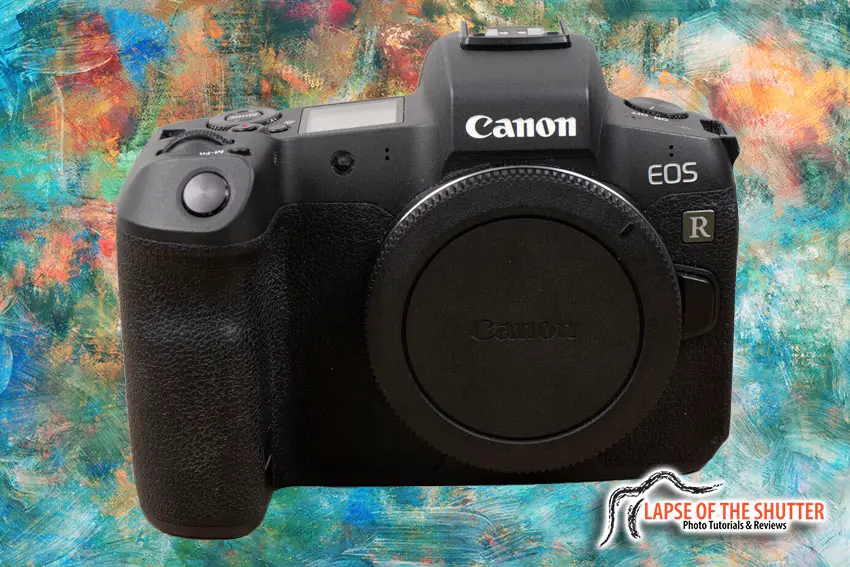
Specifications:
- Sensor: Full-Frame, 30.3 Megapixels
- Video Recording: 4K / 30 fps with 1.8x crop with Canon Log
- Included Lens (35mm equivalent): 24-105mm f/4 L IS USM
- Stabilization: Electronic & Optical via IS lenses.
- Screen: Vari angle Touch Screen
- External Mic Input: Yes
- Weight: 23.3 oz (660 g)
The Canon EOS R was the first mirrorless Full-Frame camera made by Canon. It was used as the spearhead to announce the new R line-up of cameras, and the new RF mount. At launch it was quite decent, but with firmware updates it has now become quite a refined camera that I’m sure you would enjoy using.
Video Quality
Among the cameras in this article, the Canon EOS R has the highest quality video. It can shoot 4K at 30fps at a whopping 480Mbps in ALL I compression. That is 4 times more data than any other camera in this line-up and means that you can create cinema-level vlogs.
The high bitrate applies to 1080p too, with 180Mbps with ALL I compression. With bitrates that high, you can push the footage in post-production substantially, delivering the quality of footage that users of other cameras can only dream about.
Ease of Use
The EOS R is the first pro mirrorless full-frame camera body in the R lineup. That means it is packed full of features that pros demand, like log recording for easier color grading of your footage, and it has a solid build quality.
It is weather sealed, constructed with magnesium alloy, with a smooth finish. In other words, it is tough and can take a beating.
The weakest point of the tough build is the vari-angle touchscreen. But that vari-angle touch screen, even though it is easy to break since it sticks out, is great for vlogging as it flips 180 degrees.
There is external mic support, and of course, the mic input is on the same side where the screen flips out. Luckily there is a bit of room, so you can use a right angle low profile 3.5mm jack to connect the microphone. That way the cable won’t obstruct the screen.
Being an RF mount camera, you have a variety of RF lenses to choose from, or you can choose from around 200 EF lenses which you can use with an RF to EF adapter.
You can connect your camera to your smartphone via Wi-Fi and Bluetooth, so all of your footage is available to you all the time. Even if you don’t have a laptop with you.
Performance
You can bet that the EOS R will perform marvelously in low light.
First, because it is a Full Frame camera, and second because the sensor is so well designed for low light. You can use clips shot at ISO25600 with some post-processing magic, and with the high bitrate, you will retain quite a lot of color quality.
As a pro-grade camera, the Dual Pixel Autofocus system works great. Especially after the 1.4.0 firmware update.
You get Dual Pixel Autofocus with Face and Eye tracking in both 4K and 1080p video. And all that down to a whopping -6EV. In other words, it will track pretty much everything, in almost all light conditions.
The camera doesn’t have in-body stabilization, but the excellent electronic stabilization paired with RF lenses with image stabilization can easily mimic a gimbal.
Who is the EOS R for?
If you prefer the utmost quality video, with the most reliable autofocus and low light capabilities, but you don’t really care if you have to hold a slightly heavier camera, then the Canon EOS R is for you.
Make no mistake, it is one of the most competent filmmaker cameras outside of the Cine line that Canon produces, but in a much smaller package than you would expect. If you want the ultimate in video quality, this is it.
- Pros:
- 35mm Full Frame Sensor, which is excellent for low light shooting
- Features Canon’s proven Dual Pixel Autofocus system
- More bokeh due to the large sensor
- External mic input
- Decent electronic image stabilization
- Interchangeable lenses – you can use RF and EF mount lenses (with an adapter)
- Excellent 1080p and 4K video with really high bitrate and ALL-I compression
- Vari angle touch screen
- Bluetooth and Wi-Fi connectivity
- Cons:
- 4K video is cropped to APS-C size
- External mic input blocks some of the LCD screen when filming yourself
- A bit bulkier than APS-C cameras due to the full frame sensor
6. Canon PowerShot G7X Mark II Vlogging Camera
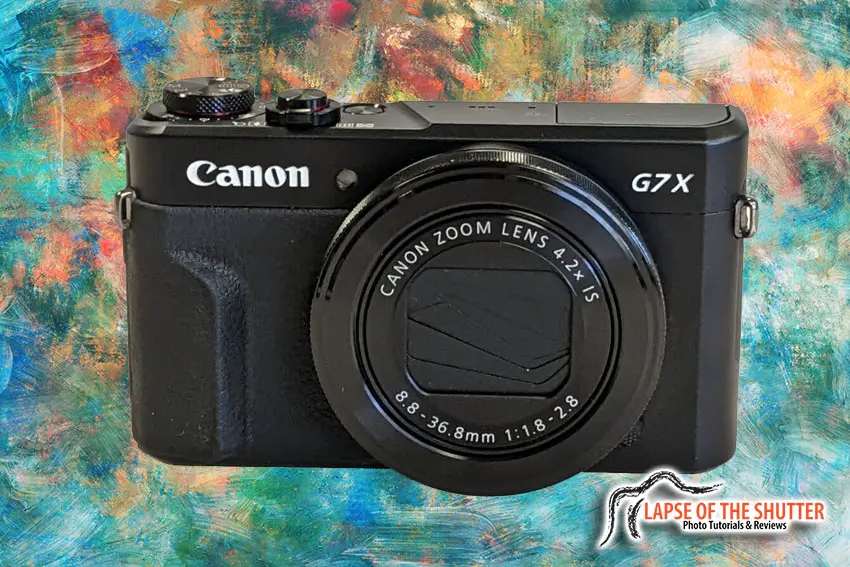
Specifications:
- Sensor: 1”, 20.1 Megapixels
- Video Recording: 1080p / 60 fps
- Included Lens (35mm equivalent): 8.8-36.8mm (24-100 f/1.8-f/2.8 equivalent)
- Stabilization: Electronic & Optical via IS lenses.
- Screen: 180˚ Tilting Touch Screen
- External Mic Input: No
- Weight: 11.2 oz (319 g)
Canon offers a couple PowerShot series cameras, however, the G7X line is more vlogger centered. It is a compact bridge camera with a lens that cannot be detached. The G7X Mark II is the second generation camera, with many improvements over the first one.
Video Quality
The G7X Mark II shoots up to 1080p video with a maximum of 60fps. It is quite decent HD video for a camera of that size. The lens lets in a ton of light, so you will get a decent video quality in low light.
Ease of Use
Being a compact and a bridge camera with a fixed lens, means that it is a pocketable little thing. It is larger than your smartphone, but still fits in a pocket. That means it will be easy to hold.
On the downside, the G7X Mark II doesn’t have an external microphone input. Meaning that you’ll have to stick with the internal mic.
You can get a wind blocker that you can stick on your camera mic to reduce the wind noise, but that is about it. Not much you can do here. On the upside, the internal mic is quite good, so your audio won’t be bad.
The 3” touch screen flips up by 180˚ so you can see yourself right above the lens. It is a good screen, good enough so you can see what you are recording.
It is a great thing that the G7X Mark II is Wi-Fi and Bluetooth enabled, so you can transfer all your footage and photos wirelessly to your phone for quick social media sharing. Large clips might be slow to transfer over Wi-Fi, but for this, you can use an OTG SD card reader to speed things up.
Performance
Given the fact that the G7X Mark II is a camera that is 6 years old by now, it is powered by the Digic 7 processor.
With that, you are getting contrast detection autofocus in video. This means that the autofocus will be good in bright and contrasty situations, however, it might struggle in low light.
In other words, it is a pretty basic autofocus system for modern cameras, then again it was top of the pile 6 years ago.
The ISO performance of the camera is quite limited. The sensor is small, smaller than APS-C, which means the pixels are smaller, and with that, they receive less light.
Even though the lens is quite bright, the small sensor paired with a bit of an outdated processor means that the video falls apart if you go over ISO1600.
This is a bit limiting, especially if you vlog after dark. Even bright street lights might not be enough here.
The image stabilization, on the other hand, is very strong.
It is a combination of optical and digital image stabilization. There are various levels of stabilization where the stronger the stabilization is, the more the camera crops in. This cropping is due to digital stabilization.
Who is the G7X Mark II for?
The Canon G7X Mark II is a great camera for beginner vloggers. Being that it is an older model, it shouldn’t be too expensive, particularly if you buy a used model. You might be limited to daytime vlogging, but it will help you get your foot in the door.
- Pros:
- Small and compact
- Great combination of digital and optical image stabilization
- Bright built in lens ranging from f/1.8 to f/2.8
- Decent 1080p video
- 180˚ Tilting Touch Screen
- Bluetooth and Wi-Fi connectivity
- Cons:
- No 4K video
- Poor low light capabilities
- No phase detection (Dual Pixel) auto focus system
7. Canon EOS M200 Vlogging Camera
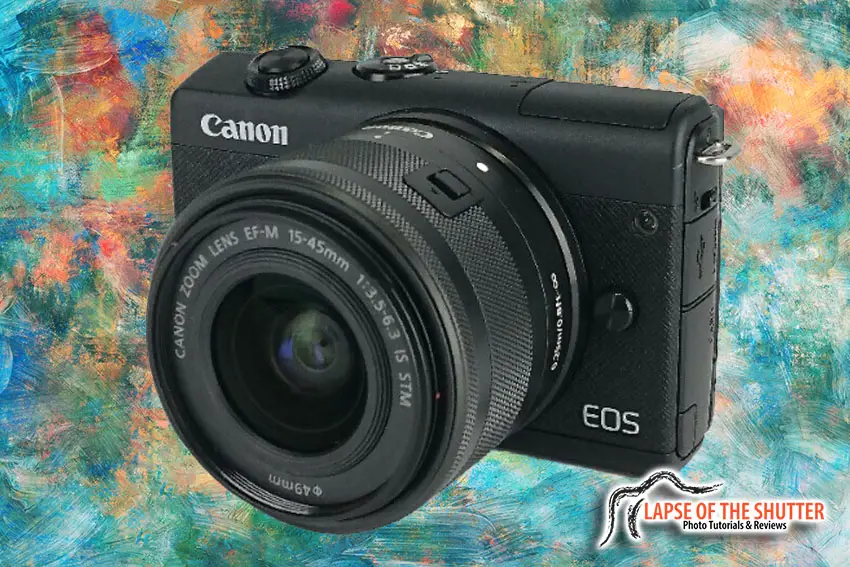
Specifications:
- Sensor: APS-C, 24.1 Megapixels
- Video Recording: 4K / 23.98 or 25 fps
- Included Lens (35mm equivalent): 15-45mm (24-72mm equivalent) f/3.5-6.3 IS STM
- Stabilization: Electronic & Optical via IS lenses.
- Screen: 180˚ tilting Touch Screen.
- External Mic Input: No.
- Weight: 10.5 oz (299 g)
The M200 is in essence, a compact M50. It sports the same sensor and the same Digic 8 processor but in a smaller and more compact body. You will find the same great image quality as you would in the M50 but also the same limitations when it comes to the 4K video.
Video Quality
Just like the M50 and the M50 Mark II, the M200 offers a very good 1080p video, especially for its size. However, the 4K video is quite cropped in. You will get a crop factor of 2.56x, instead of 1.6x that you normally would, since the M200 is an APS-C camera.
On the other hand, if 1080p works for you, the M200 is great. It can go up to 60fps, and you have a decent bitrate to work with.
Ease of Use
The Canon M200 is an EF-M mount camera, meaning you can fit all EF-M lenses and all Canon EF lenses with an EF to EF-M mount adapter.
Since it is a compact camera, there is no external mic input, which might be a dealbreaker for some vloggers. However, the internal mic is decent so audio is still easily good enough for most uses.
You might want to consider using a lavalier mic that will record into your smartphone, and then just sync the camera audio with the lavalier mic audio in post-production. Most NLEs do this with a click of a button.
The screen tilts up by 180 degrees, which means you can see yourself on the screen while vlogging. The mechanism is similar (if not the same) to the M6 Mark II. The lack of hot shoe means that you can’t mount anything that will block the LCD screen.
Of course, the M200 has Wi-Fi and Bluetooth connectivity and supports vertical video. That means that you can shoot vertically with the M200, send those videos to your smartphone, and use them right away on your social media platforms.
Performance
Thanks to the tried and true 24-megapixel sensor and the Digic 8 processor, the M200 has decent low light performance, with a video looking good at ISO1600 and video still being usable at ISO6400 with a little noise reduction in post-production.
Low light performance drops down a bit in 4K, because there is no pixel binning to remove some of the noise.
If you stick to 1080p you will be getting Dual Pixel Autofocus with Face and Eye detection, which is great.
In 4K, the camera defaults back to contrast detection autofocus. Generally the autofocus works great in low light, and it can focus down to -4EV, which is awesome.
In terms of image stabilization, the M200 has electronic image stabilization, which can work together with lens-based image stabilization.
Who is the M200 for?
Since it is a small and compact camera without external mic support, the Canon M200 is more suited for travel vloggers that prioritize portability and compactness over fancy features.
Moreover, since the M200 can output a clean HDMI while retaining Dual Pixel AF in 1080p, it is a great camera for streamers.
With a cheap capture card, a DC power coupler (dummy battery), and you can stream for hours.
Note that some people have overheating issues with the camera for streaming and that usually stems from the SD card or 4K video. Streaming works well if you do 1080p without having an SD card inserted. It can go for hours without issues.
- Pros:
- Features Canon’s proven Dual Pixel Autofocus system
- Eye Autofocus in video
- Large APS-C sensor, which is great for low light shooting
- Compact and light
- Decent electronic image stabilization
- Interchangeable lenses – you can use EF-M mount lenses or EF mount lenses with an adapter
- Great 1080p/60fps video
- 180˚ tilting Touch Screen
- Wi-Fi and Bluetooth connectivity
- Cons:
- 4K video is heavily cropped and doesn’t use the Dual Pixel Autofocus system
- No hotshoe
- No external mic input
8. Canon EOS Rebel SL3 [The Best DSLR for Vlogging]
Specifications:
- Sensor: APS-C, 24.1 Megapixels
- Video Recording: 4K / 23.98 or 25 fps
- Included Lens (35mm equivalent): 18-55mm (29-88mm equivalent) f/4-5.6 IS STM
- Stabilization: Electronic & Optical via IS lenses.
- Screen: Vari angle Touch Screen
- External Mic Input: Yes
- Weight: 14.2 oz (449 g)
Just like the Canon 90D is the DSLR counterpart to the M6 Mark II, the Rebel SL3 is the DSLR counterpart to the M50. In this case, the SL3 was introduced almost a year later than the M50. But in essence, it is the same camera, just in a DSLR body.
Video Performance
The camera is capable of 4K at 23.98 or 25 fps, but that comes with an additional crop factor, just like the M50’s. The crop is around 2.6x, which is quite significant and makes vlogging with the camera quite hard.
The 1080p video goes up to 60fps, and it has a decent bitrate.
Ease of Use
Even though the SL3 is a DSLR counterpart to the M50, one would expect that it would be quite a bit heavier. Surprisingly, the difference is only around 60 grams. For some reason, adding a larger body, a mirror box, and a pentaprism didn’t affect the weight that much – I guess Canon saved weight elsewhere, but it’s hard to tell where.
The camera is a bit bulkier though, since it is a DSLR after all, but it is on the small side when it comes to DSLR cameras, so that is a plus.
You will find a vari-angle touch screen, which flips all the way so you can see yourself while vlogging without any issues.
There is an external mic input, and just like the M50, it can be found on the side of the screen. However, due to the screen hinge design, the cable from the external mic doesn’t obstruct that much of the screen, particularly if it is a low profile right angle one.
Having both Wi-fi and Bluetooth connectivity means that you can easily send your footage to your phone, and share it to your social media feeds. This is great for vlogging on the go, or sharing stories to social media.
Performance
In low light, the SL3 behaves similarly to the M50 – it has the same sensor and processor, after all.
So in 1080p, you can expect usable video up to ISO6400. Of course, you will need to expose it correctly and denoise the footage a bit in post-production.
The Dual Pixel Autofocus works great in low light, since it can focus down to -4EV. That is pretty dark.
Some of the earlier models of this camera are known to have some focus issues, but since the camera is three years old now, chances are you won’t be getting one of those if you buy it new. If you are getting a used copy of this camera, make sure that you avoid the models from 2019, just in case.
In 1080p mode, you are getting Dual Pixel Autofocus with Face and Eye detection. In 4K, however, you are limited to the contrast detection autofocus, which is more limited.
You can use the camera for streaming, since it can output a clean HDMI feed with the DSLR form-factor probably better for this kind of filming.
The electronic image stabilization works great, even though it crops in a little. When paired with a stabilized lens, you get an excellent, perfectly stabilized image.
Who is the Canon EOS Rebel SL3 for?
If you are a vlogger that is into photography as well, and you prefer an optical viewfinder instead of an electronic one, this the Canon SL3 is the perfect camera for you. It is a nice fusion of the M50 and a small DSLR, gaining the best of both worlds.
- Pros:
- Large APS-C sensor, which is great for low light shooting
- Decent electronic image stabilization
- External mic input
- Features Canon’s proven Dual Pixel Autofocus system
- Interchangeable lenses – you can use EF and EF-S mount lenses
- Really strong 1080p/60fps video
- Vari angle touch screen
- More rugged because it is a DSLR
- Bluetooth and Wi-Fi connectivity
- Cons:
- 4K video is heavily cropped and doesn’t use the Dual Pixel Autofocus system
- Focus coverage differs with different lenses
- A bit bulkier than its mirrorless counterpart
9. Canon EOS RP Vlogging Camera
Specifications:
- Sensor: Full-Frame, 26.2 Megapixels
- Video Recording: 4K / 23.98 or 25 fps with 1.7x crop
- Included Lens (35mm equivalent): 24-105mm f/4-7.1 IS STM
- Stabilization: Electronic & Optical via IS lenses.
- Screen: Vari angle Touch Screen
- External Mic Input: Yes
- Weight: 17.1 oz (485 g)
The Canon EOS RP is the first entry-level full frame mirrorless camera that Canon made. As such, there are quite a few limitations when it comes to the features. On the other hand, even though it is an older camera, the sensor is large, thus the low light performance is fantastic, and perfect for those of you who want to shoot at night.
Video Quality
Even though it is a full-frame camera, it is an entry-level one. That means that even though you will be getting 4K video at 24fps, but there will be limitations.
The 4K video has a crop of 1.7x, effectively making the RP function as an APS-C camera when shooting 4K. Moreover, it won’t use Dual Pixel AF in 4K.
1080p video, on the other hand, is without a crop, and it is excellent. You can do 60fps in 1080p, which is great for some slow motion or buttery smooth vlogs.
Ease of Use
Being a Full Frame camera, it is a bit on the heavier side. Weighing in at 485g, it is a bit chunkier in comparison to its APS-C counterparts. But that is a small price to pay for a sensor that large. Deptise its size, the body is quite ergonomic and easy for you to fit your hands around.
The RP features a vari-angle touch screen and an external mic. And if you have been reading this article, you probably guessed by now where these two collide. The external mic port is on the same side as the screen when flipped, so for vlogging, the external mic will obstruct the screen slightly.
A right angle low profile cable will solve most of the obstruction, as the hinge puts the screen a bit away from the camera, and the screen is positioned to the right on the flap, so there is a bit of room for the cable to squeeze in without obstructing too much of the view.
As per Canon fashion, the camera is Wi-Fi and Bluetooth enabled. You can use your smartphone to transfer files and control your camera remotely. That means that you can share everything on your social media profiles on the go.
Being an RF mount camera, you get to utilize all RF mount lenses, some of which are unique to that mount (the excellent RF 28-70 f/2, for example), and with an RF to EF adapter, you can utilize all EF mount lenses as well.
Performance
Being a full-frame camera, you will be getting sublime low-light performance, especially in 1080p.
For vlogging purposes, with some post processing you can use clips shot at ISO 25600, but ISO 12800 footage is definitely good enough to use as is. The important thing with this camera is to set your shutter speed properly, since that is how you will make the most out of the footage.
In 4K mode, the ISO performance drops, but it is only around one stop worse, meaning that ISO6400 on 4K looks similar to ISO12800 in 1080p, noise wise.
When shooting 4K, you won’t be getting Dual Pixel Autofocus, instead the camera will default to contrast detection. Contrast detection here is unreliable, so 4K vlogging, even though the crop factor is not a huge limit, will be quite tough with unreliable autofocus.
In 1080p, you are getting Dual Pixel Autofocus with Face and Eye detection, and in this mode the camera is very consistent. If it can’t pick up an eye, it will default to face detection. So in 95% of the scenarios you will be in focus.
The Dual Pixel Autofocus system works down to -5EV, which is awesome. It can focus in nearly pitch dark.
You will be getting electronic image stabilization, which on a sensor of this size is great. Moreover, the kit lens has 5 stops of image stabilization. Pair that with the electronic image stabilization, and the footage will look as if it was shot on a gimbal – simply fanstastic!
If you shoot in 1080p mode, with a sensor of this size, even slower lenses like the kit one will blur the background quite a lot and create some lovely bokeh.
That is very handy to help you keep the viewers’ attention on you or your subject, thus making your vlogs more effective and looking far more professional.
Who is the Canon EOS RP for?
Since it is an entry-level full-frame camera, the Canon RP will be best suited for the vlogger that wants more depth of field, excellent low light performance, and doesn’t really care about 4K. Keep in mind that the RP is a great photo camera as well.
- Pros:
- 35mm Full Frame Sensor, which is excellent for low light shooting
- More bokeh due to the large sensor
- Fantastic electronic image stabilization
- Features Canon’s proven Dual Pixel Autofocus system
- Interchangeable lenses. You can use RF and EF mount lenses (with an adapter)
- Sublime 1080p video
- Vari angle touch screen
- Bluetooth and Wi-Fi connectivity
- External mic input
- Cons:
- 4K video is cropped to APS-C size and doesn’t use the Dual Pixel Autofocus system
- External mic input blocks some of the LCD screen when filming yourself
- A bit bulkier than APS-C cameras due to the full frame sensor
10. Canon EOS 90D Vlogging Camera
Specifications:
- Sensor: APS-C, 32.5 Megapixels
- Video Recording: 4K / up to 30fps
- Included Lens (35mm equivalent): 18-135mm (29-216mm equivalent) f/3.5-5.6 IS USM
- Stabilization: Electronic & Optical via IS lenses.
- Screen: Vari angle Touch Screen
- External Mic Input: Yes
- Weight: 27.8 oz (701 g)
The EOS 90D was released along with the EOS M6 Mark II as its DSLR counterpart. Both cameras feature the same 32.5 Megapixel sensor, and both of them are powered by the same Digic 8 processor.
Video Quality
The 90D shoots 4K video that can go up to 30 fps, while the 1080p video can go up to 120 fps. The 4k video uses the entire sensor width, meaning that there is no additional crop, which is great.
Just like the M6 Mark II, you get quite a high bitrate video which makes post-production much easier, as it gives you more video data to work with.
Ease of Use
There is no running away from the fact that the 90D is a DSLR, which means that the camera is heavier and larger than its mirrorless counterparts.
The larger size comes with the benefit of a larger battery, which has at least twice the capacity of the mirrorless counterparts.
Moreover, this camera is weather sealed, so you can use it in more extreme conditions. DSLR cameras are more rugged and less delicate than their mirrorless counterparts. The 90D is no exception here.
You will find all the connectivity ports you can think of, starting from external mic input to headphone monitor output. It has pretty much everything you need. That also includes Wi-Fi and Bluetooth, which means you can transfer all your footage and photos wirelessly to your phone so you can share them on the go.
The LCD flips to the side just like other vari-angle screens. That means that you can see yourself on the screen while you are recording your vlogs, but the external mic that is mounted on the hot shoe won’t obstruct or interfere with the LCD display.
There are a variety of lenses available for the 90D. Since it has an EF mount, it can accept all EF and EF-S lenses. Canon alone has more than 200 EF mount lenses. Add Sigma, Tokina, Tamron, Samyang, and others to the mix, and the available lens count easily goes over 300.
Performance
If you need to shoot in low light conditions, the 90D will handle that quite well. It might not be industry-leading, but you can use the ISO6400 or even ISO12800 footage. There will be noise, but nothing that a decent noise reduction algorithm or plugin can’t handle.
All 4K and 1080p modes, except 100/120fps, feature Dual Pixel Autofocus with face and eye tracking capabilities. If you use high frame rates like 100/120fps, autofocus and sound recording is disabled. The Dual Pixel Autofocus locks on consistently, and it works great in low light too down to -5EV.
The camera features electronic image stabilization for video, which can be combined with lens-based stabilization for increased effect.
Who is the Canon EOS 90D for?
The only benefit that the 90D has over its mirrorless counterpart is the camera body. Since it is more rugged, weather sealed, with longer lasting battery, the 90D is suited for the vlogger that doesn’t fear the elements.
If you are an active person vlogging in all sorts of weather conditions and your gear takes a beating, then the Canon 90D is for you.
- Pros:
- Features Canon’s proven Dual Pixel Autofocus system
- Eye Autofocus in video
- Large APS-C sensor, which is great for low light shooting
- External mic input
- Very good electronic stabilization
- Interchangeable lenses – you can use EF and EF-S mount lenses. Over 300 lenses available
- Fantastic 4K video with high bitrate
- 120fps 1080p video with high bitrate
- Vari angle Touch Screen
- Wi-Fi and Bluetooth connectivity
- Great battery life
- Cons:
- Quite heavy at 701 grams
- 120fps recording has no autofocus or audio
- Can’t charge the battery in camera. You need the external battery charger for that.
11. Canon EOS M50 Vlogging Camera
Specifications:
- Sensor: APS-C, 24.1 Megapixels
- Video Recording: 4K / 23.98 or 25 fps
- Included Lens (35mm equivalent): 15-45mm (24-72mm equivalent) f/3.5-6.3 IS STM
- Stabilization: Electronic & Optical via IS lenses.
- Screen: Vari angle Touch Screen
- External Mic Input: Yes
- Weight: 13.7 oz (390 g)
The Canon M50 was released back in 2018, making it one of the older vlogging cameras. In camera years, it is showing its age. Make no mistake, even though it is a bit of an older camera, it is quite capable, especially since general video standards haven’t changed much since then.
On paper, the M50 is great. It features a 4K video, a large APS-C sensor, Canon’s famous Dual Pixel Autofocus (DPAF) system, external microphone support, vari-angle LCD display, Canon’s Digic 8 processor, and all that in a small mirrorless package.
Video Quality
For vlogging, you will have to stick with 1080p with this camera, since in 4K mode, the camera introduces a crop of 2.56x, which is quite significant.
That means that even ultrawide lenses won’t help you in filming yourself effectively. The widest EF-M mount lens is 11-22mm, but in 4K ,that lens works like 28-56mm. It is quite hard to film yourself with a 28mm equivalent lens – not impossible, but you have very little leeway in composing your shot.
Using this camera in 1080p mode however, is a different story. If you shoot 1080p video, you get no significant crop, and the 1080p video goes up to 60fps, which is great for some slow motion or for super-smooth vlogs.
Ease of Use
Due to the 4K crop, there aren’t many lenses that are wide enough for effective vlogging. Ultrawide lenses might work, but it all depends on your setup and style.
But in 1080p video mode, the M50 has a regular APS-C crop, and because it has interchangeable lenses, you have a variety of amazing lenses to choose from.
With an EF to EF-M mount adapter, you can use lenses like the Sigma 18-35mm f/1.8 Art to film yourself in low-light scenarios. Or you can use Tokina 11-20mm f/2.8 if you need to capture wide-angle shots with a wider aperture.
The external mic support means that you can get high quality audio easily.
The external mic slot is positioned on the same side of the camera where the LCD screen flips, meaning that the mic cable will obstruct the LCD. Using a low profile right angle mic cable will minimize the obstruction to a point where it isn’t a big issue.
Moreover, the camera features both Wi-Fi and Bluetooth, so you can easily send photos and videos to your smartphone for quick sharing. Bear in mind, longer videos might take a while to transfer. For this an OTG card reader might be a better solution.
Performance
The APS-C sensor handles low light pretty well. You can get usable videos even at ISO6400. Of course the higher you go in the ISO range, the more noise you get.
However, noise is the secondary issue when it comes to high ISO. The bigger issue is color fidelity loss. The higher you go in the ISO range, the more posterization you get. That is due to the noise reduction algorithms and sensor dynamic range limitations.
The Dual Pixel Autofocus works great on almost all Canon cameras. It is a tried and true system.
In 1080p, you get the full force of Dual Pixel Autofocus, which is capable of tracking faces pretty reliably, even in low light. The DPAF works in light as low as -2EV.
Sadly, you won’t be getting any DPAF in 4K, as 4K is limited to contrast detection autofocus which is hit and miss. The DPAF in this camera has Eye Autofocus, but only for stills.
The camera features electronic image stabilization, which is great, but the electronic image stabilization crops in the image. The more stabilization applied, the higher the crop is. At the strongest, it crops up to 1.4x.
The electronic image stabilization can work in tandem with image stabilized lenses to provide almost gimbal-like stabilization.
Who is the Canon M50 for?
The Canon M50 is a quite good camera, mainly geared towards vloggers who don’t really care about having the highest resolution or the most bells and whistles. It does great 1080p video, and it does it reliably. It is a simple and a bit of a quirky solution when compared to the most recent vlogging cameras, but it works well.
- Pros:
- Really good 1080p/60fps video
- Decent electronic image stabilization
- EF-M interchangeable lens system, with other lens mounts via adapters
- External mic input
- APS-C snesor with a high pixel count
- Vari angle touch screen
- Bluetooth and Wi-Fi connectivity
- Cons:
- 4K video is heavily cropped and doesn’t use the Dual Pixel Autofocus system
- Small battery and you can’t charge it in camera
- External mic input blocks some of the LCD screen when filming yourself
Final Thoughts on Canon Vlogging Cameras
There are plenty of excellent choices of vlogging camera made by Canon, with the model that works best for you dependent on whether you want something super-small that easily fits in your pocket, like the Canon G7X MkIII, or a model with high frame-rate 4K video, like the Canon R10.
But whichever model you go for, as long as you pick one of those on this page, you will be sure to have one of the top Canon vlogging cameras.
The Best Canon Camera for Vlogging

- Canon’s first RF mount crop-sensor camera
- Digic X processor delivering phenomenal ISO support up to ISO 25,600 for video – perfect for night shoots
- Professional-grade 4K/60fps video, with Subject Detection and Tracking autofocus that works well even in near-darkness
- Far smaller and lighter than you would expect from the specifications
- Fully backwards compatible with Canon’s excellent RF, RF-S, EF and EF-S lenses
- Flip-screen meaning you can record yourself with ease
- YouTube live-streaming fully supported
FAQs
Is the Canon M50 good for vlogging?
Yes, the Canon M50 Mark II is very good for vlogging if you only care about 1080p footage. The Canon M50 has a strong crop when shooting 4K, so is less good if you intend to be filming in UHD.
What Canon camera is best for YouTube?
The best Canon camera for YouTube is the Canon M50 Mark II, as it is very easy to setup for live-streaming, and follows a tried-and-true process where all the bugs have now been worked out. The Canon R10 is better for recording standalone videos which are then uploaded to YouTube.
Are Canon cameras good for vlogging?
Canon cameras, like the Canon M50, are the best brand for vlogging, as Canon really put a lot of effort into tailoring many of their APS-C cameras specifically for vloggers, including features like live-streaming and fully articulated touch screens. Many of the world’s top vloggers use Canon cameras for their vlogs, including MrBeast.
Read More:


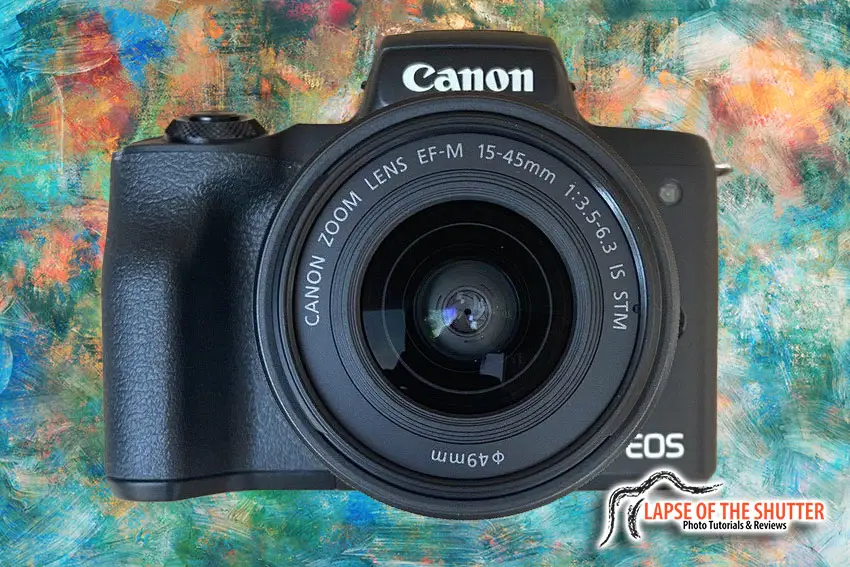
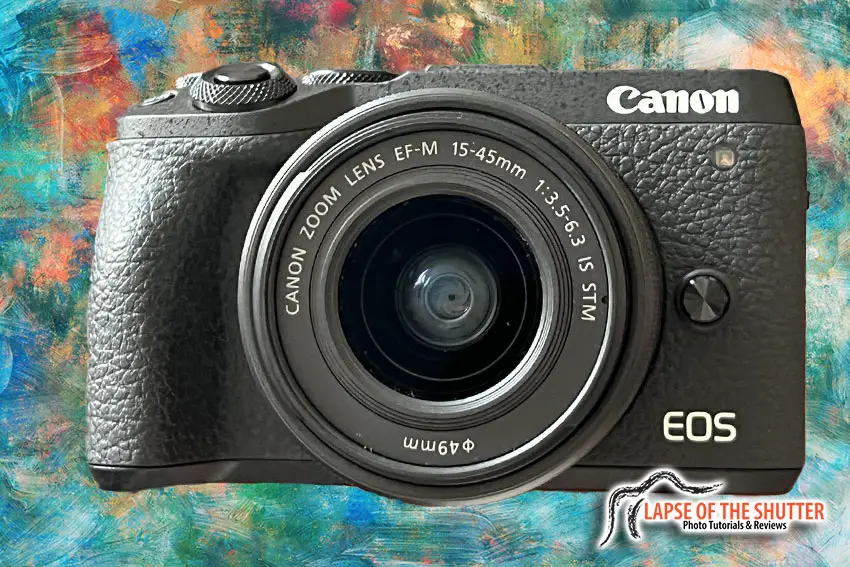



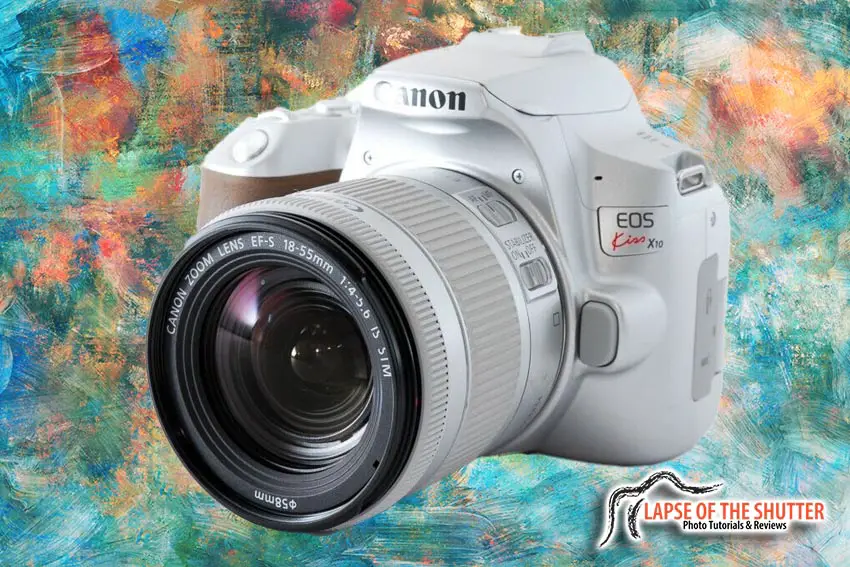
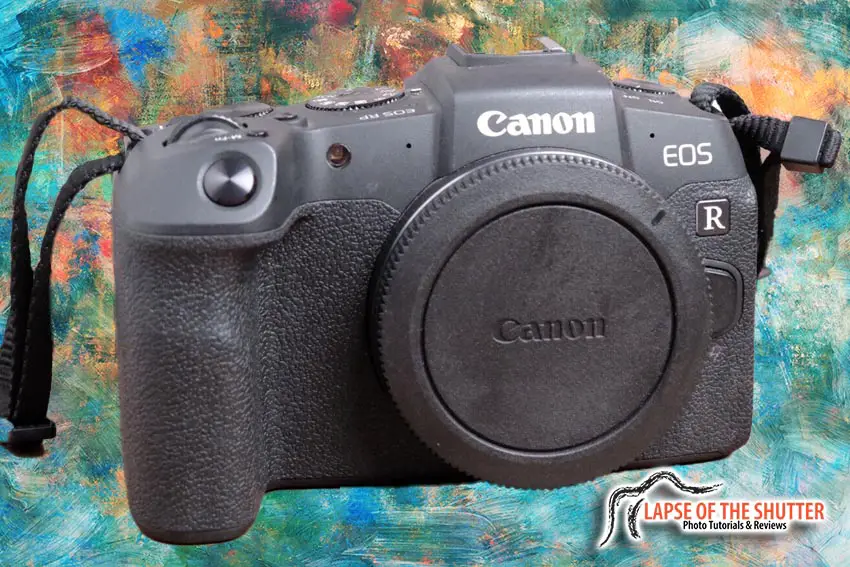
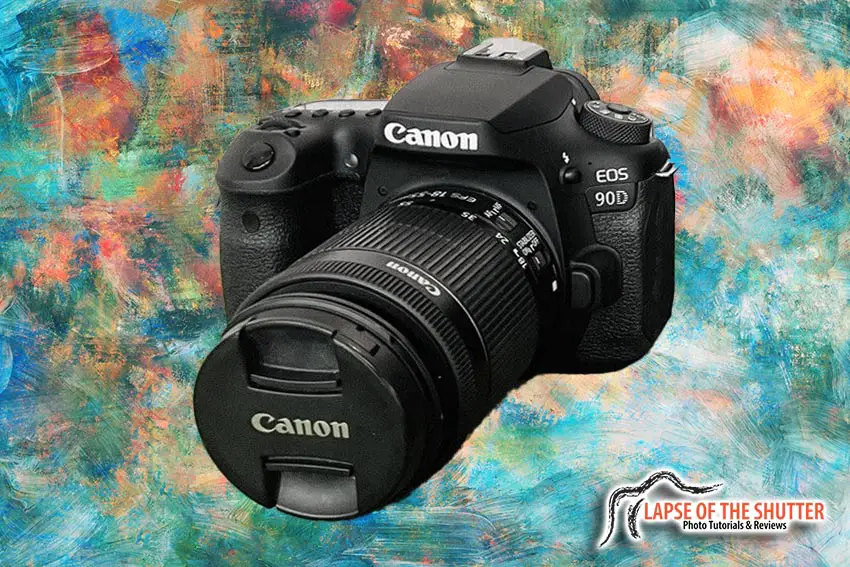
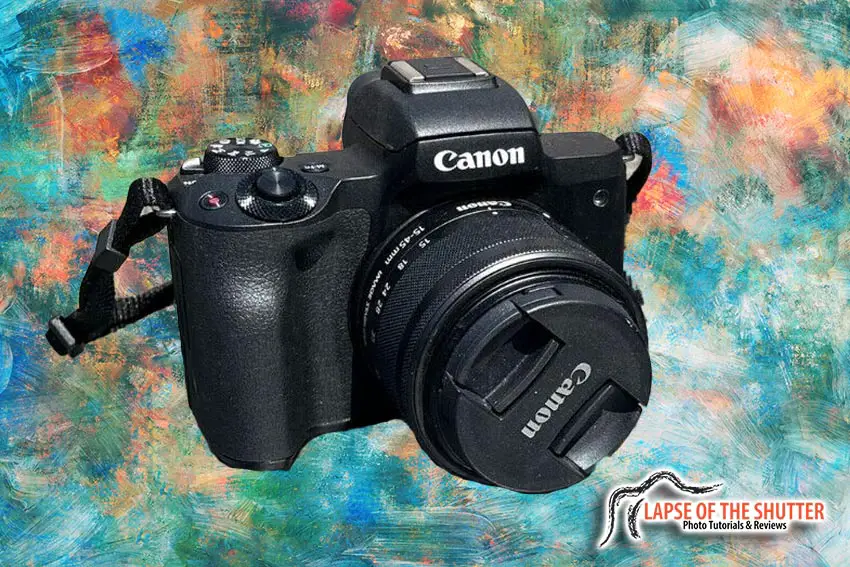







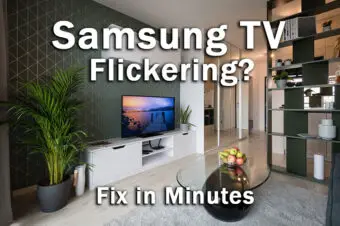

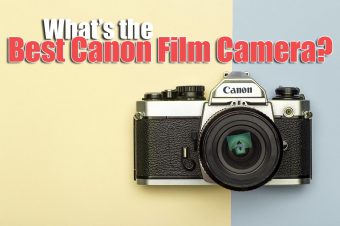
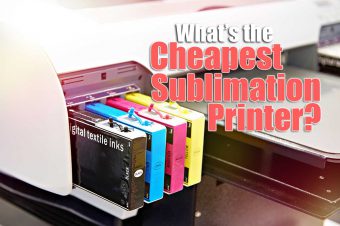
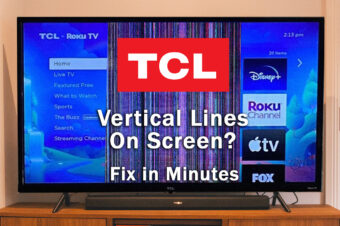
Leave a Reply